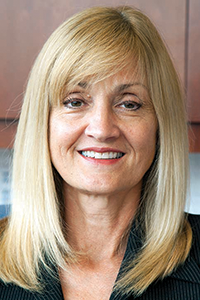Individual rates rising
Health insurers still learning about enrollees gained through the Affordable Care Act
Individual rates rising
Health insurers still learning about enrollees gained through the Affordable Care Act
Last year, health insurance company actuaries setting rates for policies in Virginia on the national health care exchange must have felt as if they were throwing darts at a moving target while blindfolded. They had only best guesses to go on in trying to calculate the impact the Affordable Care Act (ACA) would have on their companies.
This year, those actuaries had a chance to take only a quick peek at new health plan enrollees generated by the federal law before setting rates again. More than 220,000 Virginians had enrolled for individual coverage through the healthcare.gov website by the end of March, just a few weeks before the health plans’ May 9 deadline for submitting rate proposals for 2015. “Leading indicators” — early pharmacy claims received by insurers — provided some guidance as they set their rates for the coming year. The open enrollment period for 2015 on the national website runs from Nov. 15 to Feb. 15.
Overall, insurance carriers expect to see an increase in their policy premiums for individual coverage. The increases range from a low of 3.3 percent to a high of 22.4 percent and differ based on the levels of coverage. In late July, representatives from 11 insurance companies representing 25 health plans — and many more variations in policies on and off the exchange — appeared before a Virginia State Corporation Commission Bureau of Insurance panel to explain how they arrived at new rates for individual and small-group markets. (Small-group plans were not offered on the national exchange.) After its review and approval, the bureau will submit the qualified health plan recommendations to the federal government in September.
For example, actuaries from Humana, which proposed the highest rate increase in the individual market — 22.4 percent — said they needed to correct for 2014 rates that had been set too low. They told the panel that one of their assumptions for 2014 was that a large number of dependent children would be brought into their risk pool when parents signed up for more coverage. In their case, that assumption turned out to be wrong. The risk pool was skewed more than expected toward older, less-healthy adults.
Some ACA structural factors have a role in rate increases, said David Shea, a health actuary for the Bureau of Insurance. One is the health insurer fee that every carrier offering health policies must pay ($3.67 per member per month). That fee is expected to result in about a 1.5 to 2 percent increase in premiums in 2015. There also is the combined effect of “the three R’s”: reinsurance, risk corridors and risk adjustments programs, designed by the federal government as incentives to help insurance companies offset some of the risk of offering health plans on the exchange. Two of the three R’s, the reinsurance and risk corridors, are temporary programs, in place only until 2016 while insurance carriers gather the data they need to make better actuarial predictions based on actual claims experience with people enrolled through the exchange.
Pharmacy claims
While more Virginians enrolled in ACA plans than expected, the insurance companies still don’t have reliable data on this group. At the time the companies had to file their rates, many new enrollees hadn’t been to doctors yet or else their medical claims hadn’t been processed.
One of the leading indicators insurers could see, however, was pharmacy claims. These typically are filed quickly after health coverage begins. By reviewing the kinds of prescriptions being filled, insurance companies can make some assumptions about the health of the new enrollees. Nearly every representative who spoke at the hearing mentioned Sovaldi, a budget-busting new drug for hepatitis C that costs about $84,000 for a 90-day supply. The prevalence of hepatitis C is higher among the uninsured — precisely the group ACA plans were created to attract.
Between the drug’s December 2013 launch and late July, drug manufacturer Gilead Sciences reports that 80,000 people have been prescribed the 12-week treatment in the U.S. and Europe. The drug claims to cure hepatitis C, which, left untreated, can cause liver failure, liver cancer and the need for liver transplants.
Most of the insurance carriers in Virginia expect their 2015 enrollees to be healthier, as a group, than the 2014 enrollees. One reason for that expectation is “grandfathered” individual health plans will expire this year. Those are plans that did not comply with ACA requirements that Virginia allowed some residents to keep only through 2014.
Brent Wiskirchen, an associate actuary with Assurant, told the SCC panel that some states are allowing grandfathered plans to continue beyond this year, “but in Virginia, these people will be rolling into the [ACA] markets.”
Tim Connell, an actuary with Wellpoint — the parent company of Anthem, which has 3 million members in Virginia — said the grandfathered plans may have kept healthier people out of the ACA risk pool. “In 2013, there was a lot of fear. The healthcare.gov website wasn’t working, and we saw a high uptake of people staying on their own policies.”
Picking richer benefit plans
Many insurance company representatives said that more people than they expected in the 2014 enrollment group signed up for richer benefit plans. ACA plans fall under four benefit designs: bronze, silver, gold and platinum. The bronze plans typically feature the lowest premiums, the largest out-of-pocket expenses and fewest benefits. At the other end of the scale, the platinum plans have high premiums and richer benefits.
Most of the insurers appearing before the panel said silver plans in the individual plan market were their most popular, although a large number of gold plans were among the top three in popularity.

Kaiser Mid-Atlantic had the lowest overall rate increase for individual coverage, 3.3 percent. The insurer, which covers 200,000 members in Northern Virginia, has 11 health-care facilities and employs 400 physicians.
Next year, when the health plan actuaries project the rates for 2016, they will finally be using claims data from enrollees under the exchange plans in 2014 — even though there still will be some limitations of the information because of all the grandfathered policies. Perhaps then they will have a good view of the targets they are trying to hit.
Related stories:
Health insurance is seen shifting to a business-to-consumer model
T
















